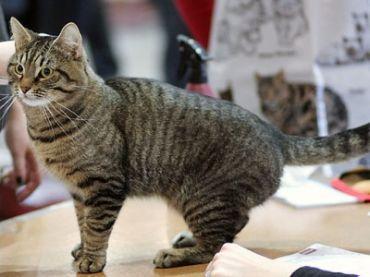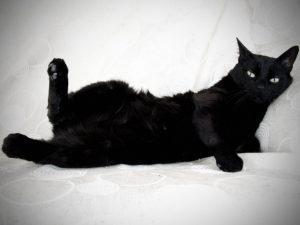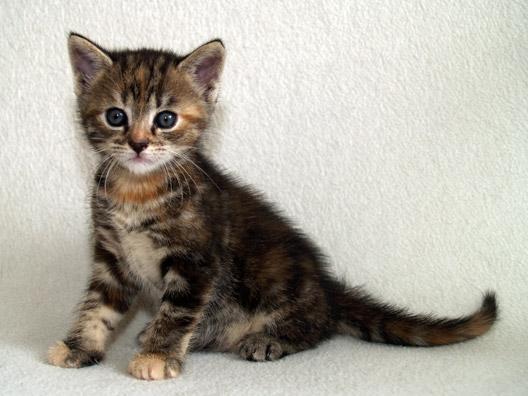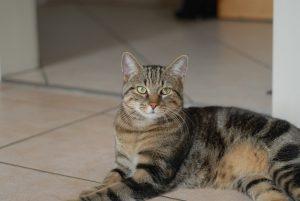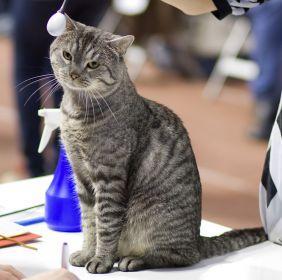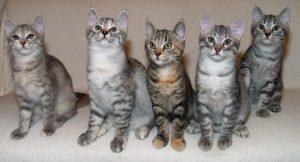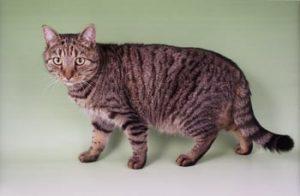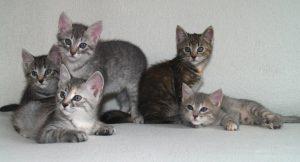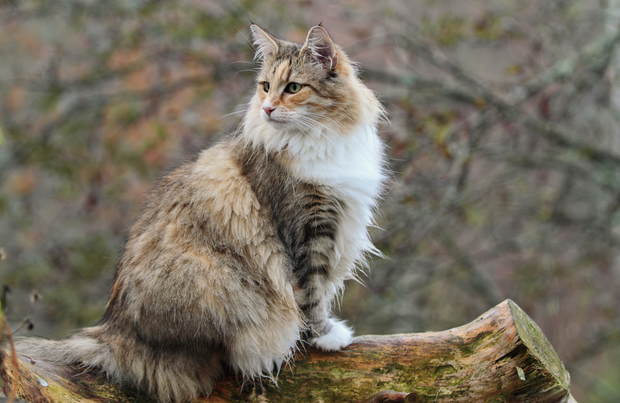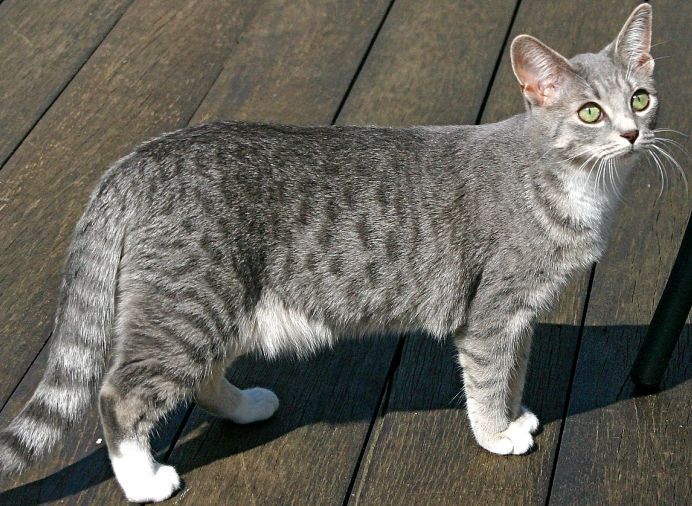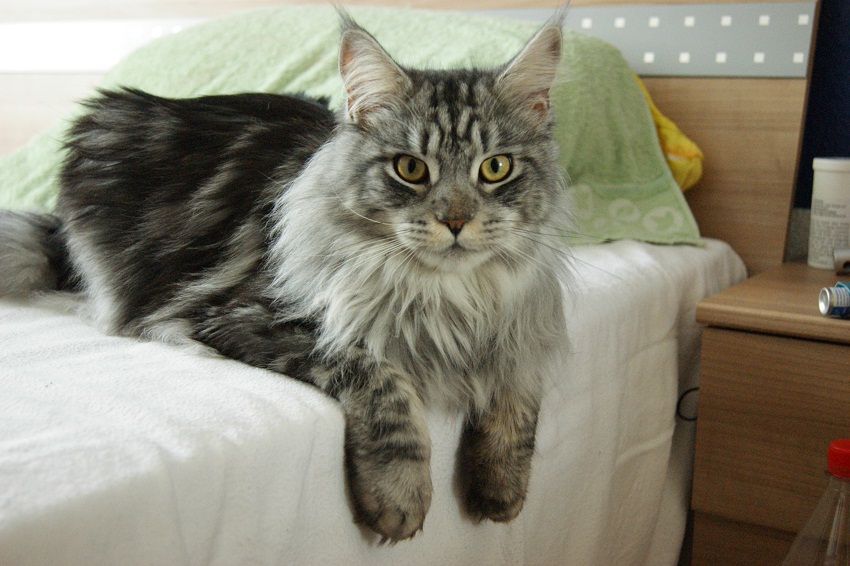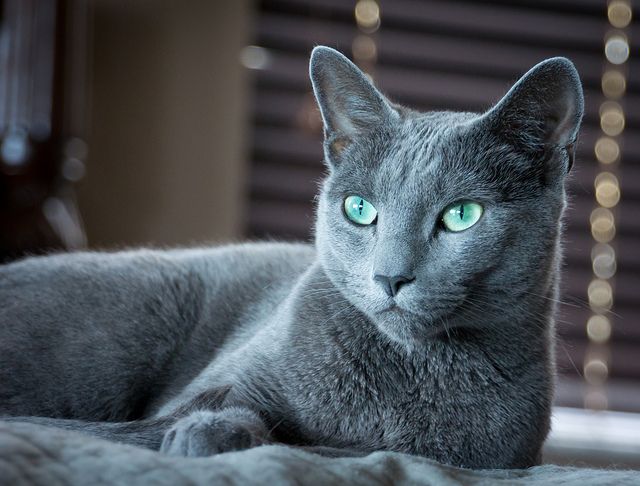European Shorthair
European shorthair even known as Celtic shorthair originated in Europe more than 2000 years ago, attaining recognition in the 20th century. Being developed from some domestic breeds, the European Shorthair possesses a unique personality emerging as an excellent family pet.
Quick Information
Physical Appearance & Size
| Body Type: | Medium to Large |
| Physical Description: | Muscular built; broad head; slightly round skull; properly developed cheeks (particularly in males); long nose, round and firm chin; medium sized ears, tufted ears with round tips; long, muscular neck; and a long, thick tail tapering to form a rounded tip. |
| Height: | 12 to 14 inches |
| Weight (Size): | 8 to 15 pounds |
Colors & Patterns
| Coat Type: | Dense, short, glossy, soft, sleek |
| Color: | Most natural colors including red, cream, blue, black, silver and smoke. Tabby or white markings may or may not be present. |
| Pattern: | Tabby, van, bicolor, tortoise shell |
| Eyes: | Large and round with the color varying according to that of the coat like green, blue or amber ( can also be odd-eyed) |
Other Characteristics
| Other Names: | Celtic shorthair |
| Average Life Span/ Life Expectancy: | 5-12 years ( outdoor cat); 15-22 years ( indoor cat) |
| Behavioral Characteristics: | Active, playful, social, friendly and intelligent |
| Lap Cat: | No |
| Shedding (Do they Shed): | Minimal |
| Vocalization: | Moderate |
| Good with Children: | Yes, though mostly the older ones |
| Hypoallergenic: | Yes |
| Country: | Europe ( Finland And Sweden) |
| Competitive Registration/ Qualification: | FIFe, ACF |
History
Initially, the European Shorthair referred to the feline breeds of Europe until it gained recognition as a separate breed. The European cats are perhaps one of the commonest breeds of Europe. Its ancestors seem to have existed more than 2000 years ago, reaching Europe with the Romans, also widely used in farms due to their hunting and rodent-controlling abilities.
Being bred in Scandinavia as well as Great Britain, the Persian cats were said to have a profound influence upon them, mainly contributing towards its cobby appearance. However, the breeders in Scandinavia have denied the influence of the Persian longhair and rather used a lot of domestic breeds to develop a unique cat with striking features.
They were confused with the British Shorthair as both of them were said to have similar genes, with the former even being referred to as the European Shorthair, in spite of looking different. One of the striking differences between the two is that the British Shorthair has a more cobby appearance in comparison to the European Shorthair.
Initially, both breeds were recognized as one by various felinological organizations until the Scandinavian variety attained recognition by the Federation Internationale Feline (FIFe) in 1982 having its set of standards. The World Cat Federation, on the other hand, accepts the name Celtic Shorthair.
Temperament and Personality
- Having a friendly nature, they bond well with the members of the family, enjoying their owner’s company to the fullest.
- Some might display an independent and territorial instinct, which might make them a little incompatible with strangers.
- They are adaptable enough, getting along well with any change in the environment as well as new people.
- Since these cats are an outcome of several domestic breeds, they may display a different temperament, with some being immensely outgoing and others having a reserved nature.
- Most European Shorthairs seem to be adept at chasing after and catching mice.
- Their amicable disposition makes them friendly with strangers as well as dogs.
- These cats get along well with children, though they prefer a matured companion who would handle them in a proper way rather than mischievous young ones.
- They have a high level of intelligence, being capable of problem-solving and doing a lot of tricks like opening doors and so on.
Who is the European Shorthair good for
- Elderly people needing a companion to keep them happy.
- Older children who would love to have a matured and intelligent playmate.
- People seeking for a rodent catcher that would keep their garden free from mice.
Care
Their short and dense coat need less grooming, thus brushing them once in a week would be sufficient enough. Apart from this regular hygiene like bathing it when it gets dirty as well as keeping its ears and eyes clean are needed to be observed.
European Shorthairs are healthy not suffering from any severe health problems as such. However, the common feline ailments they may be prone to include vomiting, tapeworms, ad lower urinary tract infection.
Training
Being highly intelligent, training these cats to mend their behavior or amuse you with various tricks would not be too difficult a task.
- To help it overcome its territorial instincts which is particularly needed if you have another cat, separate it from the other feline initially. Make sure both are kept in different rooms initially and fed separately, with their places being changed every day so that no one gets into the habit of believing a particular area to be its territory. Gradually acquaint both of them with each other though through enclosures. Once they get used to seeing each other get them into a single room, though supervision is needed to avoid any unpleasant incident.
- If you are annoyed with your pet’s prey chasing instinct, then it is needed to keep this trait under control since the time it is a kitten. You might consider taking it out for a walk or giving it a lot of interactive toys to pounce upon, especially the ones attached with wires and strings that may be dangled in front of him. Once he gets occupied in doing something creative, he may not be interested in running out and chasing a rodent.
Feeding
Feeding it with good quality cat food as well as incorporating beneficial nutrients in its diet is needed to keep it healthy.
Interesting Facts
- The ancestors of the European Shorthair were instrumental in saving many people from plague in the middle ages by killing the rats which caused the disease.

